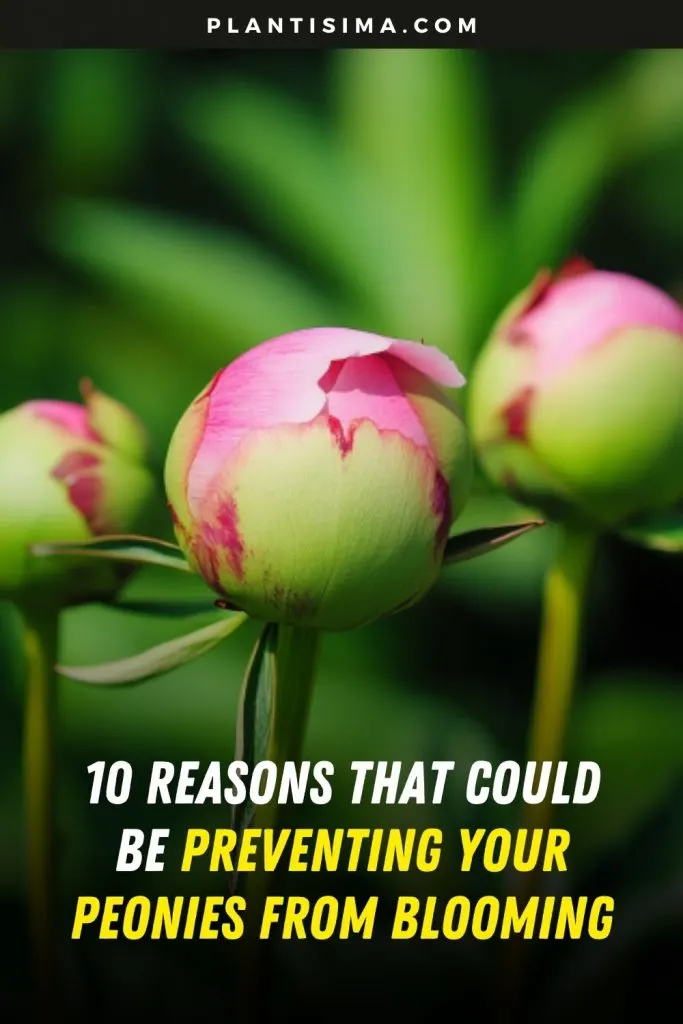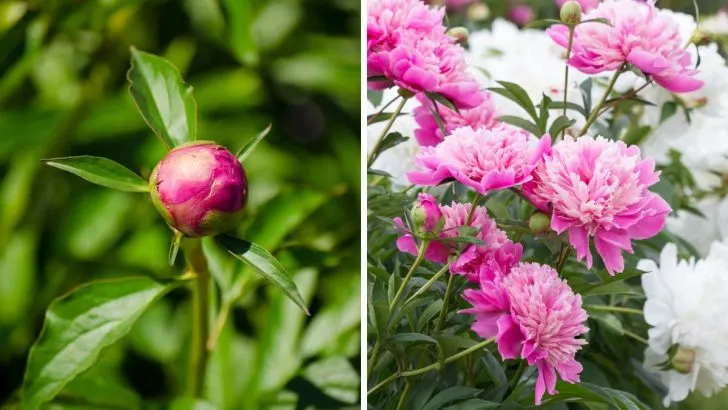Peonies are the prima donnas of the garden world – they take their time, demand the spotlight, but when they finally bloom, they steal the show.
So, it’s no wonder gardeners feel a little heartbroken when their peonies stubbornly refuse to bloom. I’ve been there too, pacing around the garden, wondering what went wrong.
If your peonies are withholding their famous flowers, you’re not alone.
To help you figure out why your peonies are giving you the cold shoulder, I’ve rounded up the top 10 reasons why they might not be blooming – and more importantly, what you can do about it.
1. Timing Isn’t Right
Before you start fretting over fertilizer or sun exposure, let’s talk timing. Are you sure your peonies are supposed to bloom right now?
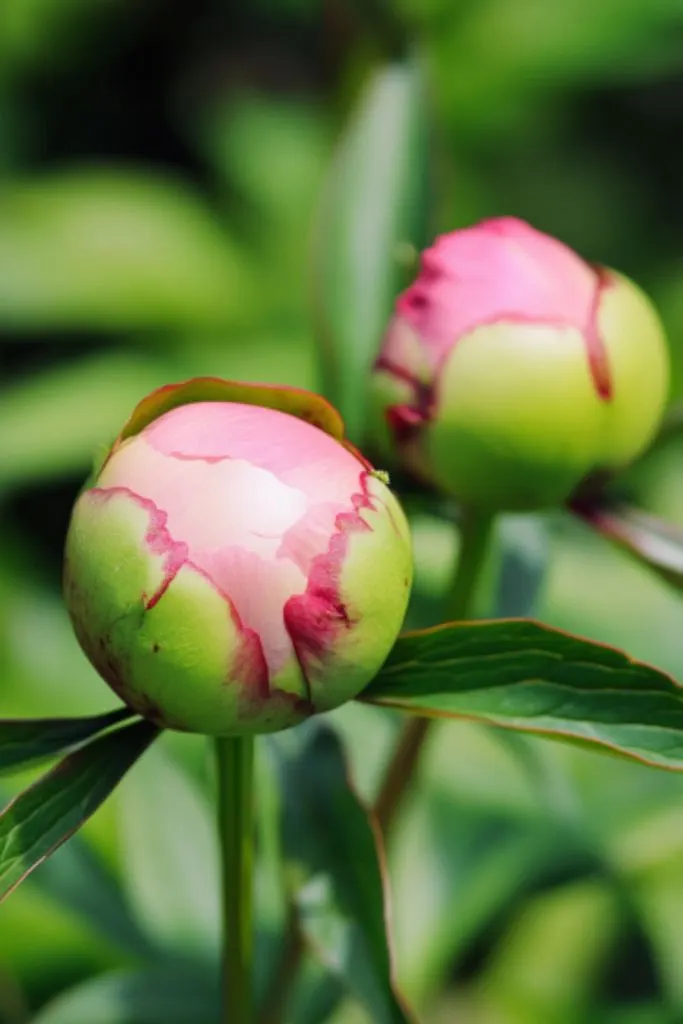
Different varieties bloom at different times, and it could just be that your peonies are late bloomers.
Some peonies dazzle in late spring, while others make a grand entrance in midsummer. Depending on your climate, this could mean a difference of weeks, even months.
So, before you panic, check the bloom time for your specific variety.
Pro Tip: Extend your peony bloom season by mixing early, mid, and late-blooming varieties. Here’s a cheat sheet to get you started:
• Mid-Spring Bloomers: ‘Chocolate Soldier,’ ‘Athena,’ ‘Early Scout’
• Late-Spring Bloomers: ‘Coral Sunset,’ ‘Claire de Lune’
• Early Summer Bloomers: ‘Felix Supreme,’ ‘Shawnee Chief’
• Mid-Summer Bloomers: ‘Sarah Bernhardt,’ ‘Bowl of Beauty’
2. Your Peonies Are Still Babies
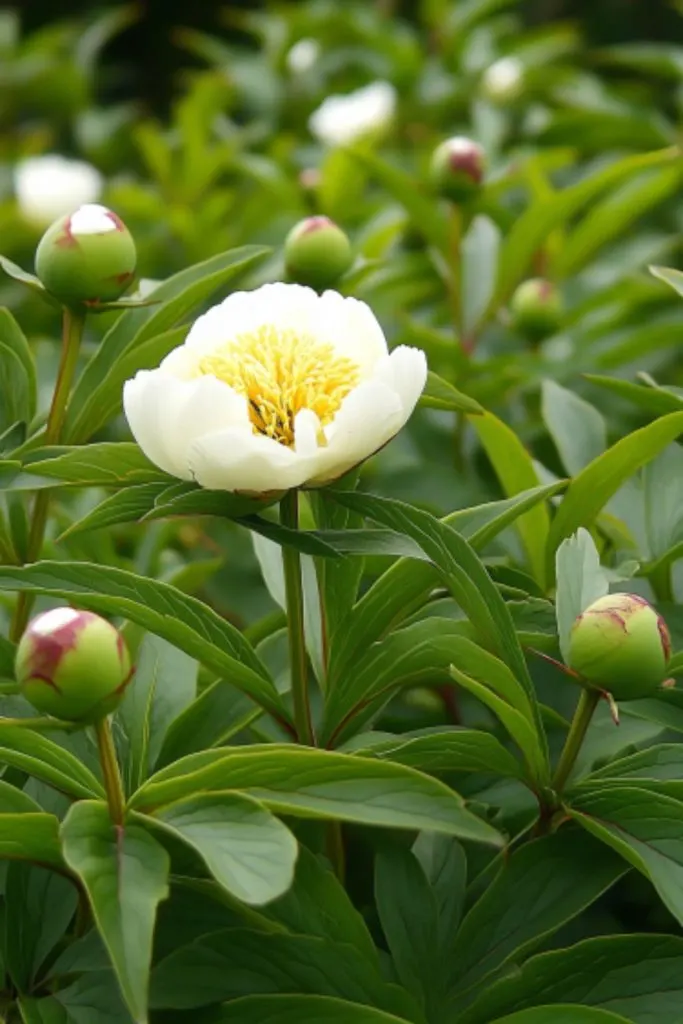
It’s easy to get impatient when you plant new peonies and expect blooms right away. But here’s the thing – peonies are in no rush to please you.
They’re putting in the groundwork (literally) to establish strong roots before they grace you with flowers.
Peonies typically take about three years to settle into their new home before they start blooming in full force. During those first few years, all their energy is going underground, working on creating a solid foundation.
It’s like they’re preparing for the long haul, and those early years are all about laying the groundwork for future success.
If you’re growing peonies from seed (kudos to you for the effort!), expect to wait even longer – around four to five years—before you see those signature blooms. So, patience is your best friend here.
3. Transplant Shock – They Need Time to Recover
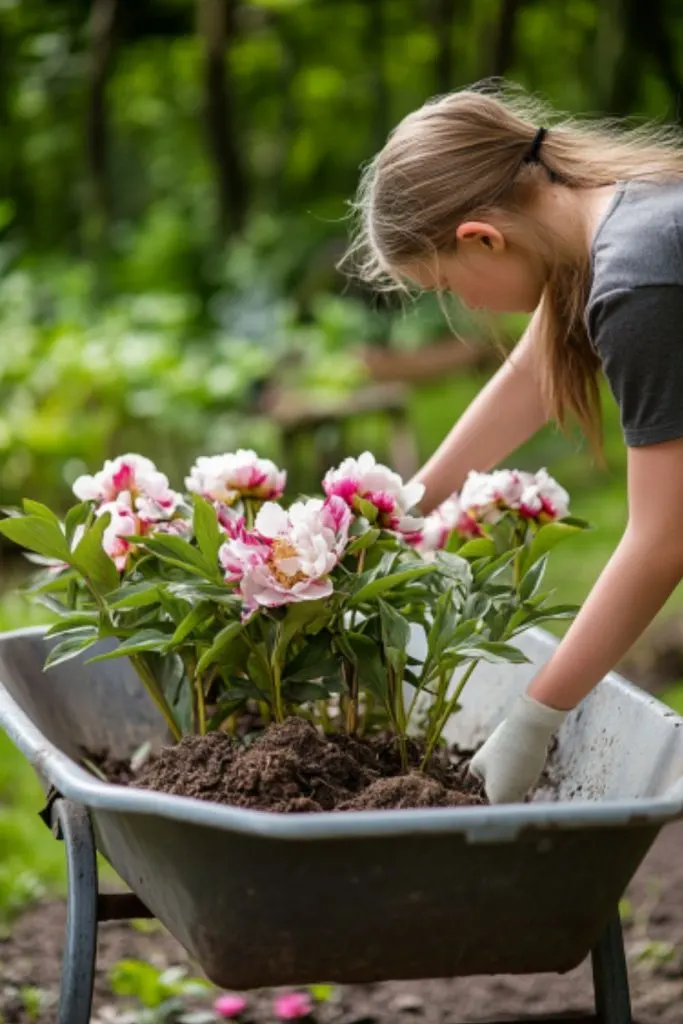
Peonies are creatures of habit. They don’t like being moved around, and if you’ve recently transplanted them, they’re probably a little disoriented.
After being divided or relocated, peonies need some time to get over the shock and settle back in. It’s a bit like moving house – they’re not going to throw a party (aka bloom) right after a big move.
If you’ve transplanted them in late summer (the best time to do it), don’t expect much blooming action the following spring. Transplant shock is real, and it may take them a season or two to recover fully.
Just give them time and some TLC (okay, I won’t use that again), and they’ll get back to blooming once they’ve adjusted.
4. Planted Too Deep – Peonies Like to Stay Shallow

Here’s a common mistake: planting your peonies too deep. Peonies are pretty picky about their planting depth, and if you bury them too far down, they’ll give you lush, leafy growth but not many flowers.
The key is to make sure the “eyes” (those little growth buds) are just 1 to 2 inches below the soil surface. Plant them any deeper than that, and you may be waiting a long time for those blooms.
If you’ve made this mistake, don’t worry – it’s not the end of the world. The peony will likely correct itself over time, but you might have to wait until next season for flowers. Just consider it a learning experience for future planting!
Bonus tip: Don’t forget to account for the layer of mulch you’ll be adding on top. If you plant them too deep and then pile on the mulch, they’re even less likely to bloom.
5. Not Enough Sunlight – Peonies Are Sun-Worshippers
Peonies might be able to tolerate a little shade, but they are sun lovers at heart. If they’re not getting at least six hours of full sunlight each day, they’ll sulk.
Sure, they might still grow and even set buds, but the flowers will be few and far between.
Take a moment to reassess your garden’s “shade map.” Maybe when you planted your peonies, they were in full sun, but as trees and shrubs have grown (or you’ve added structures like pergolas), their sunny spot might now be a shady retreat. If that’s the case, it’s time to relocate them to a sunnier spot.
Remember, more sun equals more blooms.
6. You’ve Been Too Generous with Fertilizer
Over-fertilizing is a classic case of too much of a good thing. Peonies don’t need tons of fertilizer, and too much nitrogen, in particular, can encourage leaf growth at the expense of flowers.
The result? A big, bushy plant with barely any blooms to show for it.
Instead, stick with a balanced fertilizer (like 10-10-10) or one that’s low in nitrogen (5-10-10). Add compost to your soil if you’re feeling fancy – it’ll provide a slow, steady release of nutrients that won’t overwhelm your peonies.
Just remember: less is more when it comes to peony fertilizer.
7. Pruning Too Early – Patience Is Key
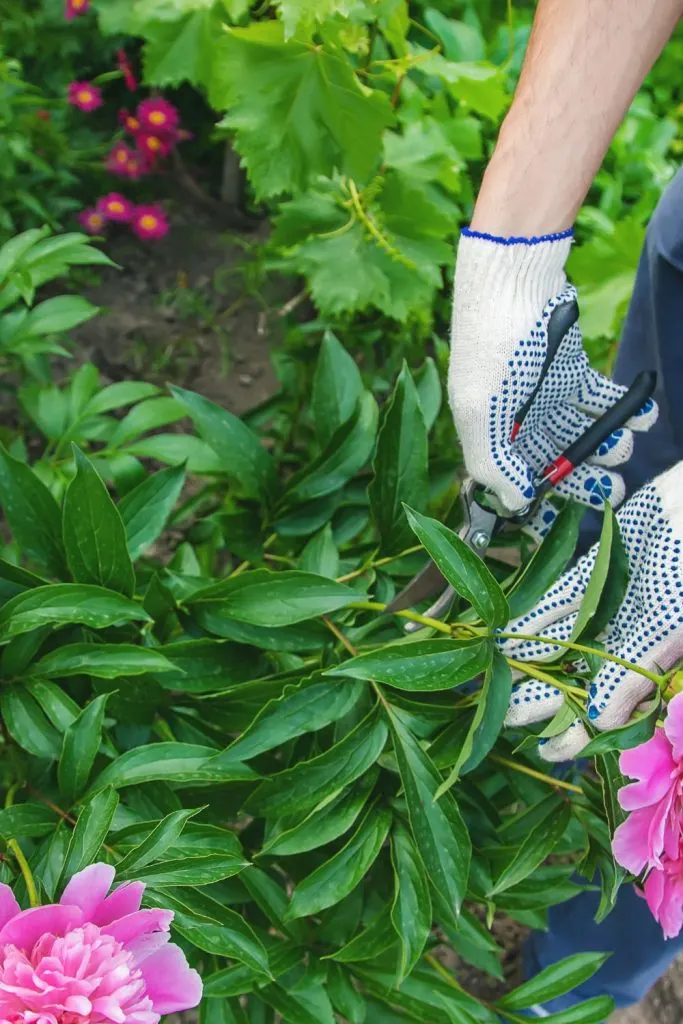
It’s tempting to cut back peonies as soon as they’ve finished blooming, but resist the urge. Peonies need their leaves to feed the roots through photosynthesis.
If you cut them back too early, you’re robbing them of the energy they need to store up for next year’s blooms.
Only prune your peonies back after the first frost, when the foliage has died down and turned brown. And if you’re growing tree peonies, never cut them back to the ground!
Unlike herbaceous peonies, they’re shrubs and will not regrow if you hack them down.
8. Late Frost Damage – A Bud’s Worst Enemy
Have you ever had peony buds that never opened? This could be the dreaded “bud blast,” often caused by a late frost.
It’s one of the most frustrating gardening experiences because those buds give you hope… and then leave you hanging.
Late frosts can zap buds just as they’re getting ready to open, leaving you with shriveled flowers that never get to see the light of day.
To prevent this, cover your plants with a frost blanket if a late freeze is in the forecast, or even use a bedsheet in a pinch.
9. Fungal Infections – Botrytis Blight Strikes Again
If your peonies set buds, but they never open, fungal disease could be the culprit. Botrytis blight (also known as gray mold) is particularly fond of wet, cool conditions and can wreak havoc on your blooms.
You’ll notice dark spots on the leaves and stems, and the buds will shrivel up instead of blooming.
The best defense is prevention. Make sure your peonies have plenty of air circulation, and avoid overhead watering.
If you do spot signs of Botrytis, remove and destroy any affected foliage, and treat with a fungicide.
10. Competition from Other Plants
Peonies don’t play well with aggressive neighbors. If they’re planted too close to trees or large shrubs, their roots might struggle to compete for nutrients and water.
The result? A peony that puts all its energy into survival and has none left for blooms.
Give your peonies some space to spread out and breathe, and make sure they’re not being crowded by larger, thirstier plants. Peonies like their elbow room.
